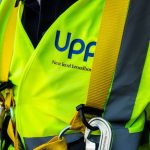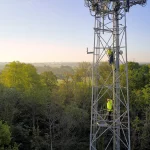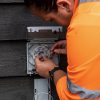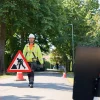Openreach Start Enhanced Migration Pilot for Legacy UK Phone Switch-Off

Network operator Openreach (BT) has kicked off their first UK pilot to test the effectiveness of a targeted approach for safeguarding vulnerable customers during the mass migrations away from the old Public Switched Telephone Network (PSTN), which is due to be switched-off, in favour of a temporary alternative service.
Just to recap. The legacy phone switch-off was last year delayed to 31st January 2027 in order to give broadband ISPs, phone, telecare providers, councils and consumers more time to adapt (details). The main focus of this was the 1.8 million UK people who use vital home telecare systems (e.g. elderly, disabled – vulnerable users), which aren’t always compatible with digital phone services because telecare providers were slow to adapt. But this overlooks that, for everybody else, many providers will still be working to the original Dec 2025 deadline to have their customers off the PSTN network.
The vast majority of regular consumers and business are expected to shift over to IP-based digital phone (VoIP etc.) services. But Openreach’s new Enhanced Migration pilot is focused on an alternative solution that has been specifically designed for vulnerable people.
Advertisement
The above reflects BT and Openreach’s work to develop the Pre-Digital Phone Line (PDPL) product (aka – SOTAP for Analogue). This is essentially an exchange-based Voice over IP (VoIP) service that replicates how the old service worked, albeit over a more modern network (i.e. it does NOT require broadband, new kit, an engineer visit or battery back-up to function). This is only intended to be available to vulnerable and edge use case users on existing lines (not new customers) who would otherwise “face challenges” in migrating to normal internet (IP) based voice solutions by the deadline.
The new pilot actually provides two options for the PSTN/WLR switch-off, one of which will move relevant customers to SOTAP for Analogue. The other will move them to a fully unbundled (MPF) line, like the ones that TalkTalk, Sky Broadband and a few other providers still offer (i.e. lines where broadband ISPs have invested to put their own kit inside exchanges, granting them more control over the lines and pricing etc.).
Openreach’s Briefing on Enhanced Migration
The Pilot will be chargeable and the price for the Enhanced Migration Service Wrap will be an additional £6.00 [ex. VAT] per migration.
The Pilot will:
· Prove the optimal run rate for the Enhanced Migration Service Wrap at scale;
· Confirm successful testing of WLR lines at CCD-3 at scale using robots; and
· Confirm the operational impact and costs at scale.
The Pilot will run for six months or until the target volume of 10,000 same-CP [Communications Provider] mass migrations (WLR to SOTAP for Analogue and WLR to MPF) have been achieved (whichever is sooner).
To participate in this Pilot, a CP must be actively migrating vulnerable end customers using the same – CP mass migration process.
In taking part in this Pilot, CPs retain their responsibilities in relation to vulnerable end customers and it is the responsibility of CPs, not Openreach, to ensure appropriate safeguards are in place. Please see briefing (GEN077/24 Provisions for Telecare Customers) for more CP guidance on when and how to place provision orders for end customers with telecare devices.
The Pilot, which should be able to ensure that vulnerable customers can continue using their landline in the same way they do today, does not currently apply to people in Hull (KCOM’s patch), the Isles of Scilly or the Highlands & Islands region of Scotland. In addition, this should perhaps be thought of as only a temporary solution, since it will be impacted by the eventual closure of Openreach’s old exchanges from 2030 onwards.
Mark is a professional technology writer, IT consultant and computer engineer from Dorset (England), he also founded ISPreview in 1999 and enjoys analysing the latest telecoms and broadband developments. Find me on X (Twitter), Mastodon, Facebook, BlueSky, Threads.net and Linkedin.
« Quickline Publish 3 Year UK Full Fibre Broadband Rollout Plan






















































SOTAP just seem to be a case of kicking-the-can if there is nothing in the way of a requirement being imposed on the CreProvider to find an alternative product for their client as part of the offer. If the CareProvider is not required to make the effort then BT is just digging a bigger hole for itself.
The nature of these things does mean that can-kicking does solve most of the problem of elderly people on obsolete tech.
@125us: Why are you assuming that it is just elderly people who are subject to these problematic situations?
Even if elderly people are involved, the SOTAP offering only offers a solution for a limited time period.
I think the point is that elderly people only hang around for a limited time.
There is other natural churn – e.g. if people move house, they are unable to order a new analogue line at the new location, forcing them to take a modern service.
When combined, after a few years the problem size becomes much more manageable, to the point where CSPs can hand-hold the few remaining.
PDPL/SOTAP for Analogue makes entire sense as an interim measure to enable migration of those difficult or vulnerable cases. It will last until 2030 when the exchanges are decommissioned under Openreach’s “Exchange Exit 2030”. At that point should a customer not have Openreach broadband then alternatives will be found, e.g. another fibre network, 4G/5G Fixed Wireless Access (FWA) or satellite broadband.
@NE555:
Again, it is being assumed that the age of care recipients and death by natural causes will reduce the numbers reliant on the new service, when in fact this is a simplistic generalisation. You are classed as elderly once you reach 60, but many people survive into their 80s and 90s.
It is not a matter of managing numbers; the service is offered to CareProviders to give them more time to complete migrations, which they should have started on a few years ago.
@Roger_Gooner:
SOTAP is about kicking the can. It is to help out CareProviders who have not made the effort to migrate their customers. It will potentially cause more problems down the line. I would also make the point that if the CareProvider is not able to use the Openreach service now, why did the former not embark on finding an alternative before now?
You would hope that since care providers/suppliers of telecare equipment have already had 6 years notice, have secured a 14 month extension on the IP switchover and now there is a solution that for many will mean they have a further 4 years or more to get something in place would mean if they don’t have a solution in place by then, they shouldn’t be in business.
However on top of the aforementioned age situation by other commenters, the point that they won’t have been able to enrol any new customers for (by 2030) about 6 years using equipment which relies on PSTN means they probably will be out of business if they don’t have another solution in place.
Just done a rollout of store upgrades
This is in shopping centres around the uk
96 adsl
106 sogea
15 fttp
2 4g as no copper or fibre.
Most shopping centres aren’t ready for fttp.
Lakeside and Bluewater are adsl
Openreach needs to be contacting all these centres.